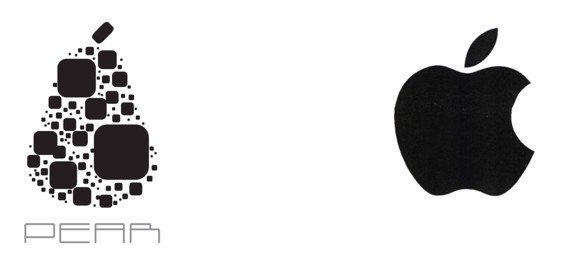

Comparing apples and... pears
In 2014, Pear Technologies attempted to register the following trademark logo for computer and software-related goods and services in classes 9, 35 and 42. Apple owns the following well-known EU trademark logo and claimed Pear Technologies was attempting to ride on the coattails of its reputation. This resulted in Apple successfully filing an opposition with the European Union Intellectual Property Office (EUIPO) in January 2015. Pear Technologies appealed the opposition, but the Board of Appeal upheld the earlier decision. This is why the case was brought before the European General Court (EGC).

The EGC’s view is that Board of Appeal misinterpreted the law regarding the similarity of the trademarks. The EGC believes the visual, phonetic and conceptual similarity of two trademarks needs to be established first – before a brand’s reputation can be considered. The whole issue of whether the public will establish a link between two conflicting trademarks because of a brand’s reputation, only becomes relevant once a basic degree of similarity has been established.
Remote visual similarity
Initially, the Board of Appeal concluded there was a remote visual similarity between the two trademarks. This conclusion was based on the fact that both logos embodied silhouettes of fruit that had been topped by a separate element such as a stem or leaf. What is more, the stem and leaf had both been positioned in a similar way, i.e. at a 45-degree angle.
Pear Technologies, nevertheless, convincingly argued these two trademarks were very different because its trademark was not composed of a solid image but of an abstract representation of a pear that showed no trace of a bite. Moreover, the separate element in the Apple trademark logo was a leaf as opposed to the stem in the Pear Technologies trademark logo. These visual differences outweighed the similarities, which, according to the EGC, did not amount to much more than the presence of the colour black and a similar positioning of the leaf and stem.
Comparing concepts
After the visual assessment, the EGC compared apples and pears on a conceptual level. The Board of Appeal concluded that, despite different types of fruit being depicted in these images, these fruits were still similar because of their origin, size, colour and texture. But the truth is that none of these characteristics is featured in either of the trademark logos. The EGC believes a person would have to be quite knowledgeable about fruit and perform an abstract analysis to recognise any conceptual similarity between the two trademarks. For instance, it is unlikely that the general public would know that both apples and pears belong to the same plant family (Rosaceae). What is more, the conceptual comparison should not be based on generic terms such as ‘fruit’, but should examine the specific images used: i.e. a bitten apple with a leaf, as opposed to a pear with a stem.
Conclusion
Remarkably, the EGC decided there was no similarity between the trademarks, which is why they felt it was unnecessary to investigate Apple’s reputation as a determining factor in this case.
Update Oct 2022 - As Apple’s appeal was dismissed by the Court of Justice of the EU (CJEU), one could say that it lost the battle of the fruits. However, it seems that Pear Technologies just couldn’t hold its breath long enough. Days before the CJEU filed its decision, Pear Technologies withdrew its trademark application and filed a new application for the same logo, but for a limited set of services for class 42 – which indicates that a settlement was reached between the parties.
The comparing of apples and pears is therefore no longer necessary.
